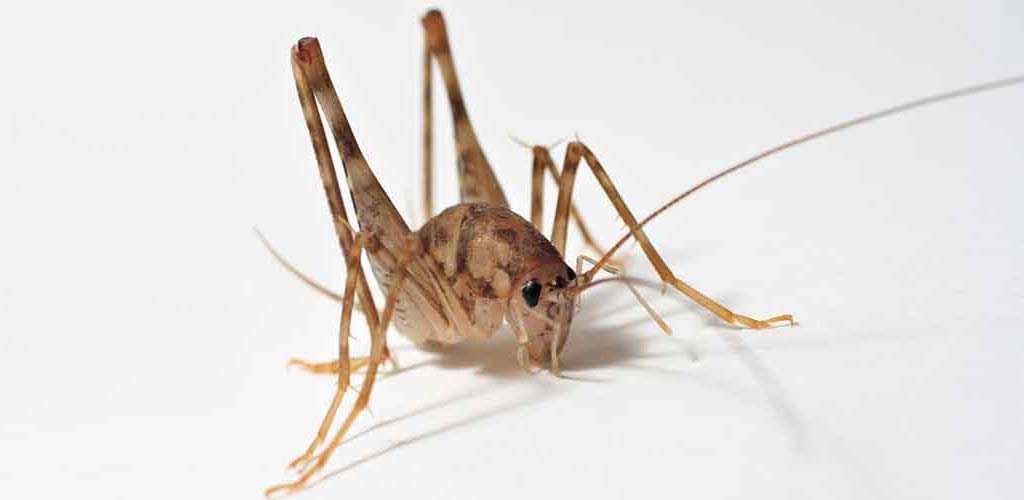Do Cave Crickets Bite

At first glance cave crickets seem like the stuff of childhood nightmares. Their long legs make them look like wolf spiders which is scary enough, and then they start jumping right at you. I’ll never forget my first encounter with cave crickets . While removing an old log pile under a deck I discovered a nest with a dozen or so VERY large cave crickets. At first it seemed like small mice were jumping at me, until I killed one with a shovel and discovered it was a cave cricket. My next thought was do cave crickets bite or sting?
So Do Cave Crickets Bite
Cave crickets go by several names, camel crickets, spider crickets, spricket, or criders. What ever you want to call them cave crickets look like they are ready to sting or at least take a bite out of your finger. However do cave crickets bite or sting? The answer to this depends on who you ask. Since cave crickets eat plants, fungus and other non living things they mostly chew their food. This means they don’t have fangs and will usually not bite. However cave crickets are capable of biting and some people claim to have been bitten by them. Cave crickets are not aggressive and will usually avoid contact with people. But if you try to pick them up, just be careful. To understand what may and may not cause a cave cricket to bite lets take a deeper look at what exactly is a cave cricket.

Cave Crickets are from the Orthoptera order of insects which includes grasshoppers, locusts and crickets. Crickets are then broken into a sub group called Ensifera. Insects in the Ensifera sub order, cave crickets in particular, are found world wide. Their common name (cave cricket vs camel cricket vs spider cricket) typically depends on location. They are typically found in dense woods, caves, animal burrows, under stones, or under decaying logs. When they come into contact with humans cave crickets will often make their way into basements, crawl spaces or any other cool humid environment.
Cave crickets are occasionally described as half spider and half cricket. They maybe brownish and can grow up to two inches in length with a hunched backed body similar to a shrimp. Their spidery appearance is due to abnormally long legs. In addition to long skinny legs they have long slender antennae that’s longer then their body. Their spidery appearance is why many people ask do cave crickets bite. Thankfully cave crickets unlike regular field crickets are flightless (yes regular crickets can fly!) and nocturnal. Cave crickets actually are very unique when compared to regular black field or house crickets.
Cave Cricket vs Regular Cricket
Unlike the common black house or field cricket the cave cricket does not make a sound. Cave crickets can live up to two years as compared to a few months for regular crickets. As was mentioned previously cave crickets like cool humid environments as compared to the warmth preferred by regular crickets. This is why cave crickets are attracted to the humid and cool environment of residential basements. Cave Crickets also jump much higher then regular crickets, up to three feet! Besides jumping high cave crickets tend to jump towards you. This a defense tacit to startle predators. Another similarity between cave crickets and regular crickets is they can both bite if provoked or handled. Do regular and cave crickets bite? Like most insects they will defend themselves if they feel in danger.
How to Get Rid of Cave Crickets
Like most insects cave crickets have an exoskeleton for protection. In addition the exoskeleton serves as a water tight barrier that keeps them from drying out. However the exoskeleton is also one of the easiest ways to get rid of cave crickets. The cave crickets exoskeleton can be punctured if it comes into contact with small abrasive particles. If this happens over a significant portion of the crickets body it will dry out ( called desiccation ) the cave cricket and kill it.
Applying diatomaceous earth is a simple and natural way to get rid of cave crickets. Since diatomaceous earth losses it effectiveness in humid environments you may want to run a dehumidifier. The dehumidifier will help the diatomaceous earth last longer and make the environment less inviting to cave crickets.
To avoid even worrying about if cave crickets bite you can use natural pest control ideas to keep cave crickets out of your house. Check out our article on natural pest control to keep cave crickets and other insects out of your home.
Checkout our head to head mosquito repellent challenge in Thermacell Radius vs Patio Shield

